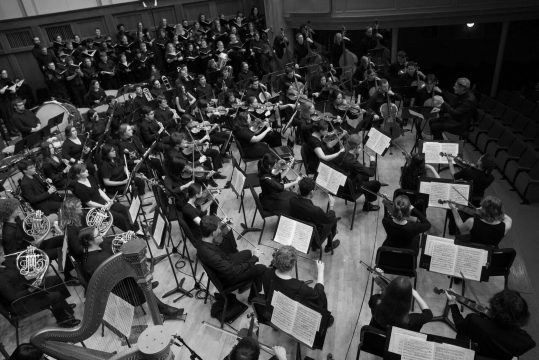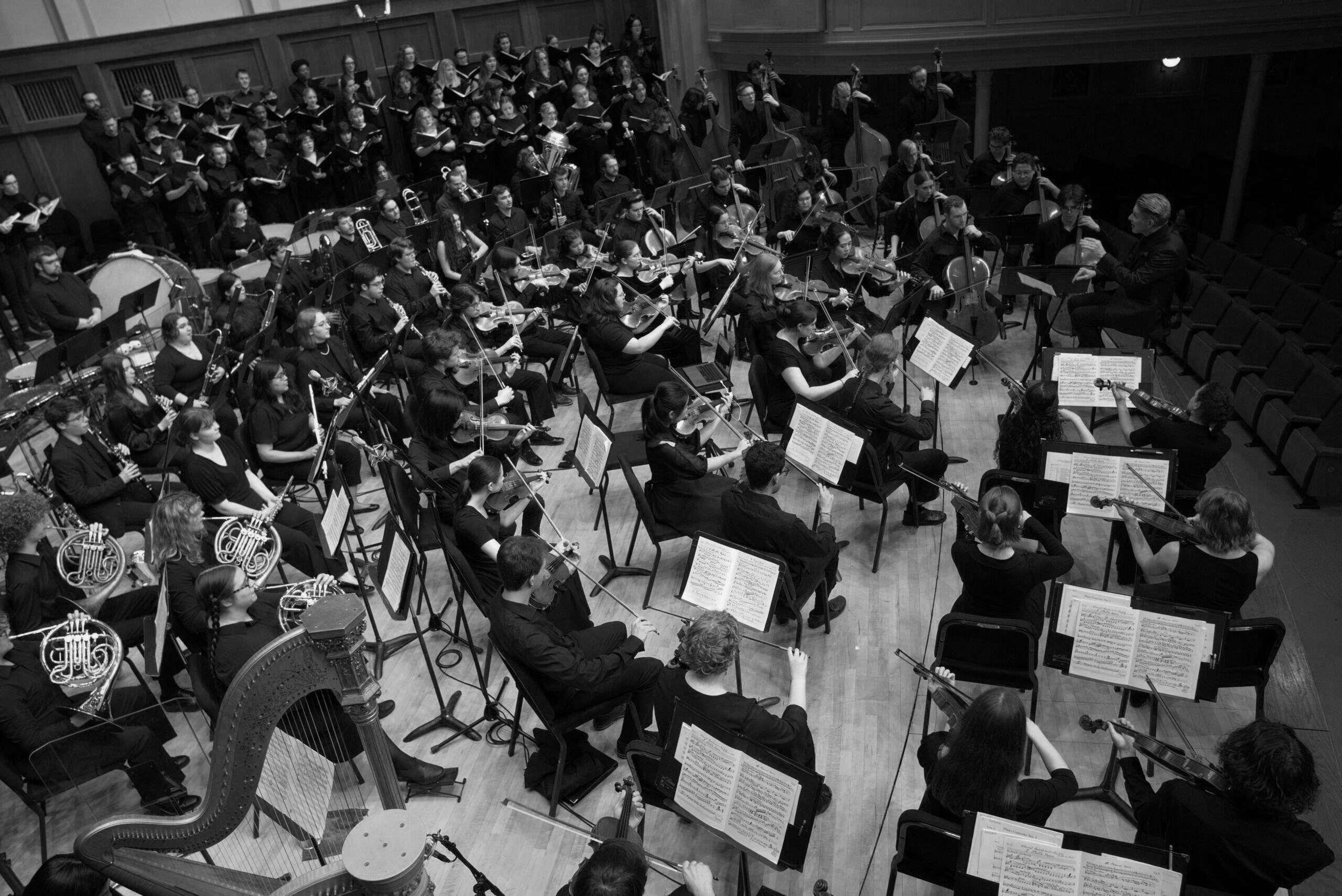On Friday, April 25, The Lawrence University Choirs and Symphony Orchestra took the stage at Memorial Chapel to deliver their annual Major Works Concert. This year, the collaboration was conducted by Dr. Phillip A. Swan, Professor of Music and Lawrence’s Director of Choral Studies. The Major Works series is an annual partnership between Lawrence’s Symphony Orchestra and Choirs working together to bring to life intricate and masterfully composed pieces. In years past, the program has included Mozart’s “Great Mass in C Minor,” Reena Esmail’s “This Love Between Us” (a piece about the 7 major religions of India) and Jake Runestad’s “A Silence Haunts Me.”
As the lights dimmed and Dr. Swan entered the stage, applause reverberated around the packed chapel. After a quick pause for the orchestra to tune, the ensemble began with Gustav Holst’s “Choral Hymns from the Rig Veda.” Based on texts in Sanskrit from the Rig Veda, the oldest scripture of the Hindu religions, translated by Holst himself, this collection of hymns deals with ancient battles, the creation of the universe and funeral rites. Composed in Holst’s provocative and hauntingly beautiful style, the work set the tone for what was to come.

Next, the ensemble performed two works from neo-classical composer Dan Forrest, “Psalm of Ascension” and the third movement of “LUX: The Dawn From On High,” entitled “The Sun Never Says.” With text from Psalms 124 and 126, “Psalm of Ascension” began with a beautiful blending of woodwinds, soft strings and choral textures, before exploding into an allegro section with fast violin and flute arpeggios, creating a soaring, hopeful feeling, reminiscent of a movie score. Moving into “The Sun Never Says,” the third movement of Forrest’s “LUX: The Dawn From On High,” the orchestra opened with lighter, almost floaty chords. With lyrics that come from a Daniel Ladinsky poem titled “The Gift” and help from senior Nick Chrisman’s elegant cello solo, the piece created an atmospheric and reflective affect, providing a respite from the intensity of the previous works.
As the last piece before intermission, the ensemble had prepared Jake Runestad’s “Climb.” Runestad is a well-known GRAMMY® Award nominated modern composer of choral and orchestra works, with a distinct visceral and powerful musical style. This piece dealt with the struggles of life and our ability to persevere through even the toughest of challenges, with lyrics by Todd Boss reading “We may see only lowliness– no grade, no slope, no hope of a view…Climb, then! Climb!– Where we are broken let us rise to the sublime!” Leaving the audience with a sense of hope blasted into the chapel with ascendant horns and soaring strings, Climb was an emotionally powerful end to the first half of the Major Works concert.
To conclude the concert, the ensemble launched into Jocelyn Hagen’s “The Notebooks of Leonardo Da Vinci,” a mixed media piece with visuals projected on a screen above the orchestra. This piece delved into the life and philosophies of da Vinci through the lens of his writings, capturing the spirit of his unquenchable thirst for knowledge and often playful, curious mind. Each movement focused on a different aspect of da Vinci’s journals, with some of the overarching themes being his willingness to fail as part of the creative process, a focus on empirical truth and fascination with the natural world. This work also utilized a revolutionary video-syncing technology, which Hagen cites as a major inspiration for composing the symphony. One of the most striking uses of this came in the third movement “Ripples,” where plucked strings, wood block and staccato winds created the sound of water droplets hitting a pond perfectly in sync with the projected images.
Ending with images of stars and a self-portrait of da Vinci himself, this year’s Major Works concert lived up to its title of “Strength, Purpose, and Passion.” The concert was a result of months of planning and five weeks of intensive practice, putting together over 200 students, in conjunction with Professor Phillip A. Swan, Associate Professor of Music and Director of Orchestral Studies Mark Dupere and Assistant Professor of Music – Choral Studies Shannon Gravelle, to achieve an evening of masterful musical performance.

